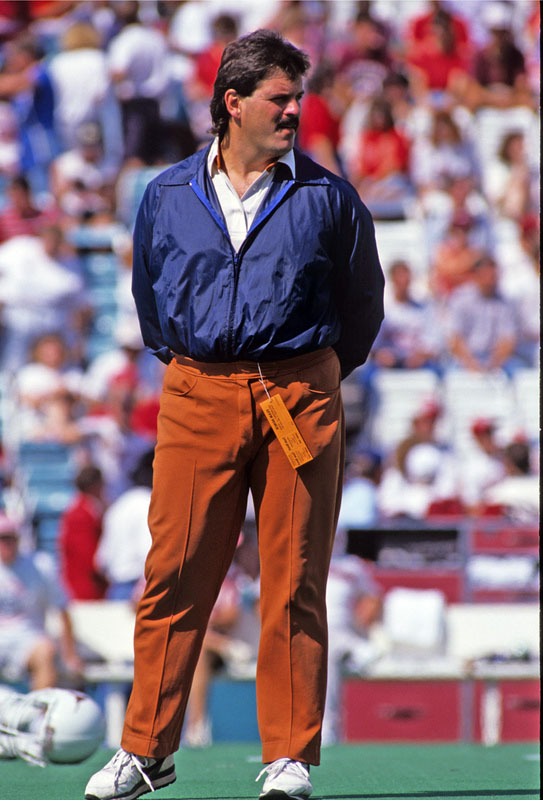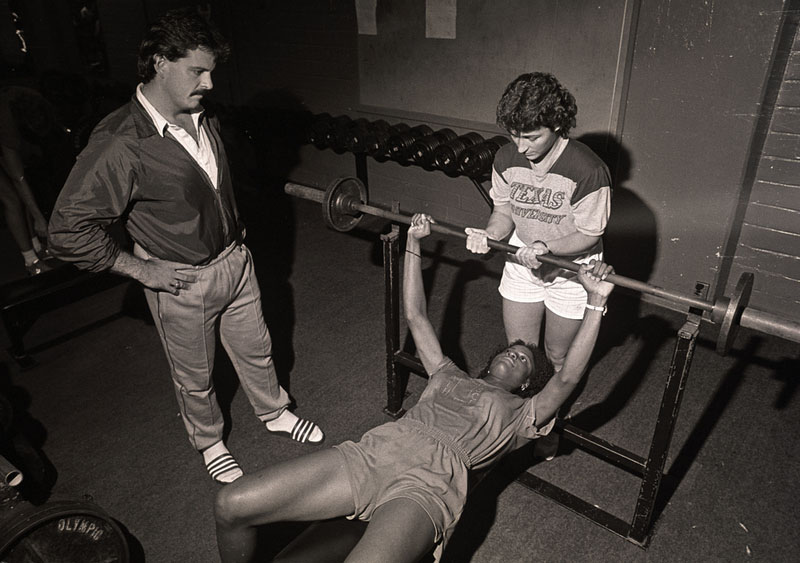Dana LeDuc: Bio
In 1978, Dana LeDuc was hired as the University of Texas' first titled strength and conditioning coach. Prior to becoming a strength and conditioning professional, the Tacoma, Wash., native competed for the University of Texas as a shot putter and ammassed Southwest Conference chamionship titles in 1974, 1975 and 1976. During this time, LeDuc set the school record in shot put at 67-0 1/4 feet. Additionally, during his senior year he won the 1976 National Championship with a throw of 65-5 1/2 feet, in addition to placing fifth at the Olympic trials.
Following a career ending elbow injury in 1977, LeDuc was hired on by the athletic staff at the University of Texas to work as an assistant under Charlie Craven. Although his duties with strength and conditioning revolved mainly around football, LeDuc was a huge advocate for enhancing all UT sports through weight room training. LeDuc stated, "I really believe there is no type of athlete taht weight training and strength work can't help." Along with colleague and mentor Craven, LeDuc was also an early pioneer of unitlizing strength and flexibility exercises to combat joint injuries. Even though some critics, such as UT Professor Karl Klein, believed "over-developed muscles caused pressure on ligaments and tendons," LeDuc argued that strength exercises, "when done properly, should stabilized the joints."
LeDuc's coaching philosophy was based around strength development as a means to incresase on-field performance for football players. He allowed athletes to transition into more power and sport specific movements once a standard level of strength was attained.
LeDuc also adopted more anaerobic movements based on "quick bursts of speed over shorter distances" compared to the "lap after lap" of long-distance runs. In addition, he implemented Olympic lifting movements, particularly the clean and jerk and the snatch, to mimic the physiological demands of football.
These movements, accompanied by other exercises which challenged the central nervous system, resulted in what LeDuc considered, "better results on the field." His findings were that "80 to 85 percent of the athletes showed improvement of speed" after doing explosive lifting movements compared to athletes who followed standard off-season workouts.
In his program, LeDuc imposed a hard-nosed team-first philosophy. During the 1990 off-season, players were required to start lifting at 5:30 a.m., and in the beginning off-season training, LeDuc programmed condition-based exercise circuits three days a week, with weight-based circuits in between these days.
As soon as his athletes were able to attain a strong conditioning base and body fat standard appropriate to their position, Leduc prescribed power-building exercises to mimic more unified group of athletes. Defensive back Mark Berry (1988-1991) considered LeDuc's program to be "old school" - one that would "develop pride [and] teamwork."
LeDuc also believed in maintaing off-season strength gains throughout the duration of the season, and so he implemented four weekly weight-room sessions, (compared to the standard two or three sessions), in order for athletes to endure the longevity of the football season. He placed great focus on in-season programs for offensive linemen, focusing on lower body strength maintenance, which helped to produce the sort of durable athlete who was suited to Head Coach David McWillims' run-based scheme.
During his career at Texas, LeDuc initiated weight room design change as well. Having studied at the Institue of Sports and Physical Education in Moscow, Russia in 1987, he was able to provide ideas for state-of-the-art equipment during the design phase of the Vernon F. Neuhaus - Darrell K. Royal Athletic Facility. LeDuc added machines that allowed athletes to work through a range of 360 degrees of motion during exercise and thus become a more forceful athlete. LeDuc also developed a computer program that customized workouts to meet the specific physical needs of each athlete. This allowed for more intensified programs for younger atheltes in order to accelerate their weight room development.
LeDuc left Texas in 1992 after accepting a job as the head strength and conditioning coach at the University of Miami. In 1995, he moved to the Seattle Seahawks as their head strength and conditioning coach. In 1999, LeDuc accepted a job as the head strength coach for the St. Louis Rams and helped lead the team to a Super Bowl victory in 2000. He remained with the Rams until his retirement in 2008.


